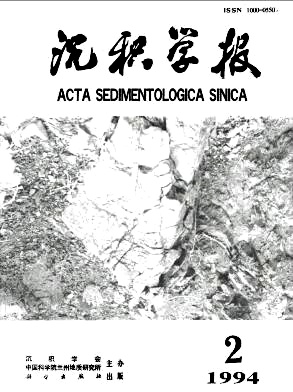Chen Baozhang, Li Congxian, Ye Zhizheng. The Study on Holocene Sedimentation in the Southern South Hnanghai Sea Coastal Land[J]. Acta Sedimentologica Sinica, 1994, 12(2): 63-71.
| Citation:
|
Chen Baozhang, Li Congxian, Ye Zhizheng. The Study on Holocene Sedimentation in the Southern South Hnanghai Sea Coastal Land[J]. Acta Sedimentologica Sinica, 1994, 12(2): 63-71.
|
The Study on Holocene Sedimentation in the Southern South Hnanghai Sea Coastal Land
-
1 Regional Development Institute of Xuzhou Normal college, Xuzhou;
-
2 Department of Marine Geology of Tongji University, Shanghai
-
Abstract
The author discussed the Holocene sedimentary facies and its evolution,based mainly upon data of the eight drill-holes and also upon other several dozens of reference drill-holes, as well as the field investigation of the buried tidal sand bodies in the studied area for the first time. Characteristics of the sediments in the cores have been studied about their textures, structures,minerals and macrofossils. Radiometric dating 14C carried out for the important levels. It is non-marine facies of Pleistocene that underlay the sediment of Holocene with unconformity between them: The topography of the area at the end of Pleistocene inclined from northwest towards southeast which influenced the Holocene transgression obviously. The Holocene sedimentary sequence can be divided into the lower transgressive and the upper regressive one, consisting of beach facies(contains estuary-bay in sbme part of the area),near- shore neritic facies(tidal sand body facies)and tidal flat facies etc. It is obvious that facies change horizontally. In different environment appear different sedimentary sequences. The sequence can be classified into four types,which were discussed加detail in this paper. For all the four types,the best developed area is in the southeast part of the studied area, and the worst is in the northwest. The buried tidal sand bodies can be crassified into three types:Ⅰ)near-shore tidal sand bars;Ⅱ)tidal sand waves ;Ⅲnear-shore tidal sand ridges. They were formed and preserved successively along with the cycle of transgression and regression,and their distribution pattern was controlled by shift of the Changjiang river towards southeast during the Holocene.
-
References
|
[1]
|
李成治,李本川,lssl,海洋与湖沼,(4):311~331. |
|
[2]
|
周长振,孙家松,1981,海洋地质研究,(1):83~91. |
|
[3]
|
杨长恕,1985,海洋地质与第四纪地质,(3):35~94, |
|
[4]
|
杨子赓等,1985,海洋地质与第四纪地质,(4):23~32, |
|
[5]
|
郑光房,1989,南黄海第四纪层型地层对比,科学出版社。 |
|
[6]
|
许世远等,1987,长江三角洲现代沉积研究,华东师范大学出版社,97~106, |
|
[7]
|
赵松龄等,1991,海洋地质与第四纪地质,(3):105 ~112。 |
|
[8]
|
陈报章等,1991,海洋地质与第四纪地质,(2):37~96. |
|
[9]
|
Reading, H. D. (0d),1978, Blackwell Scientific Publication,p. 259~336. |
|
[10]
|
Stride, A. H.,1982, Offshore tidal sands processes and deposits, Chapan and Hall Lid, London, New York, p.380~920. |
|
[11]
|
Caston, V. N. D.,1972, Linear sand banks in the southern North Sea, Sedimentology, Vol. 18, No. 1,P.63~78. |
|
[12]
|
Belderson, R. H.,Stride, A. H.,1966, Mar. Geol.,Vol. 4, No. 4,p. 237~257. |
|
[13]
|
Kenyon, N. H.,1970, Mar. Geol.,Vol. 8, No. 1,p. 25~39. |
|
[14]
|
Off, T.,1963,人m. Assoc. Pat. Geol. Bull, Vo1.47,No. 2, p. 329~337. |
|
[15]
|
Swift, D. J. P.,1975, Mar. Geol.,Vol. 13, No. 2, p. 105~134. |
-
-
Proportional views

-






 DownLoad:
DownLoad: